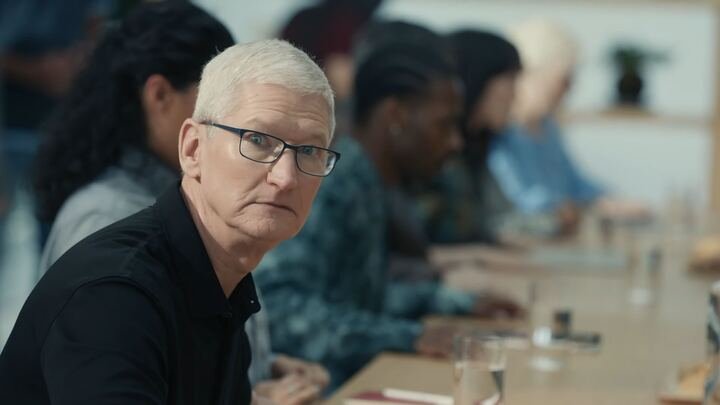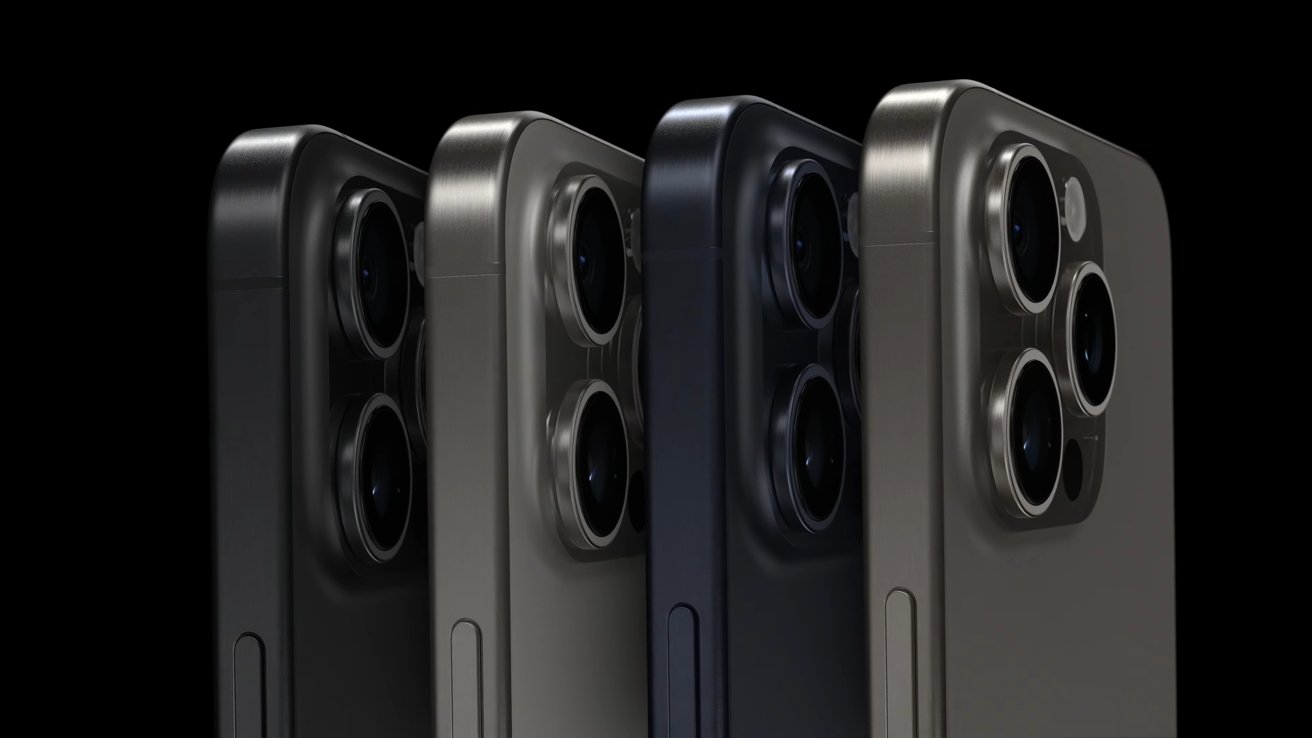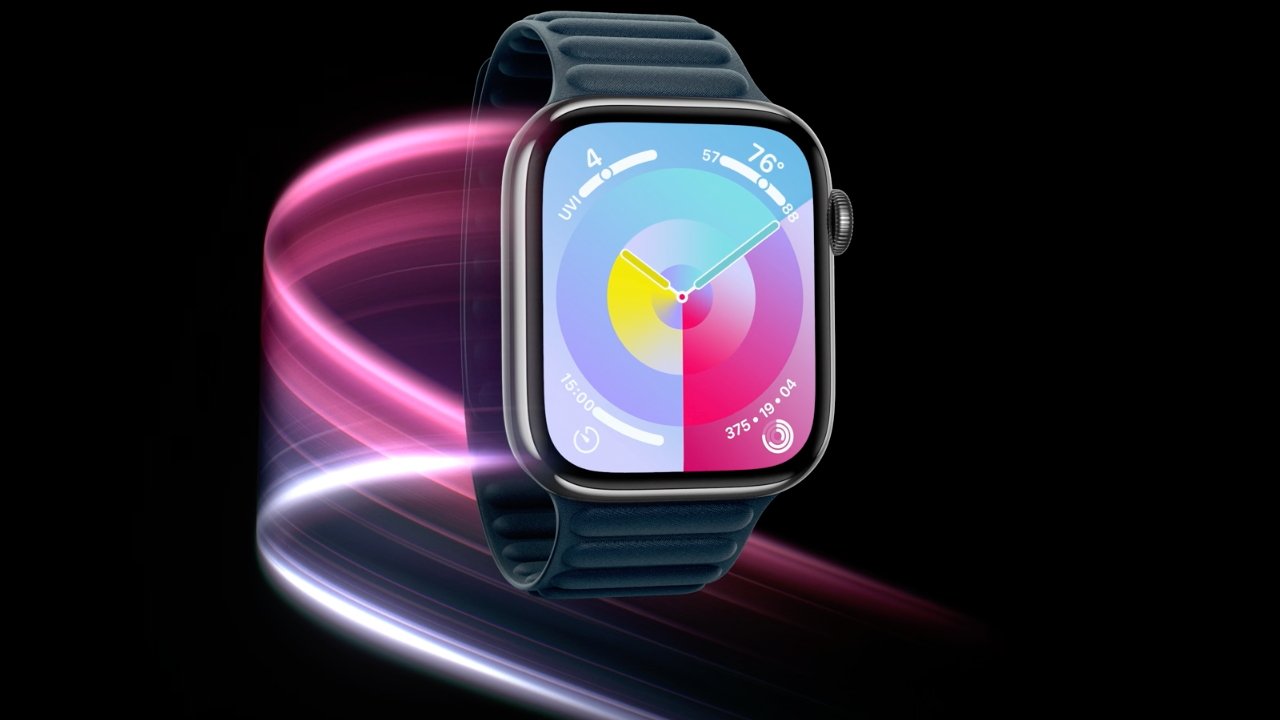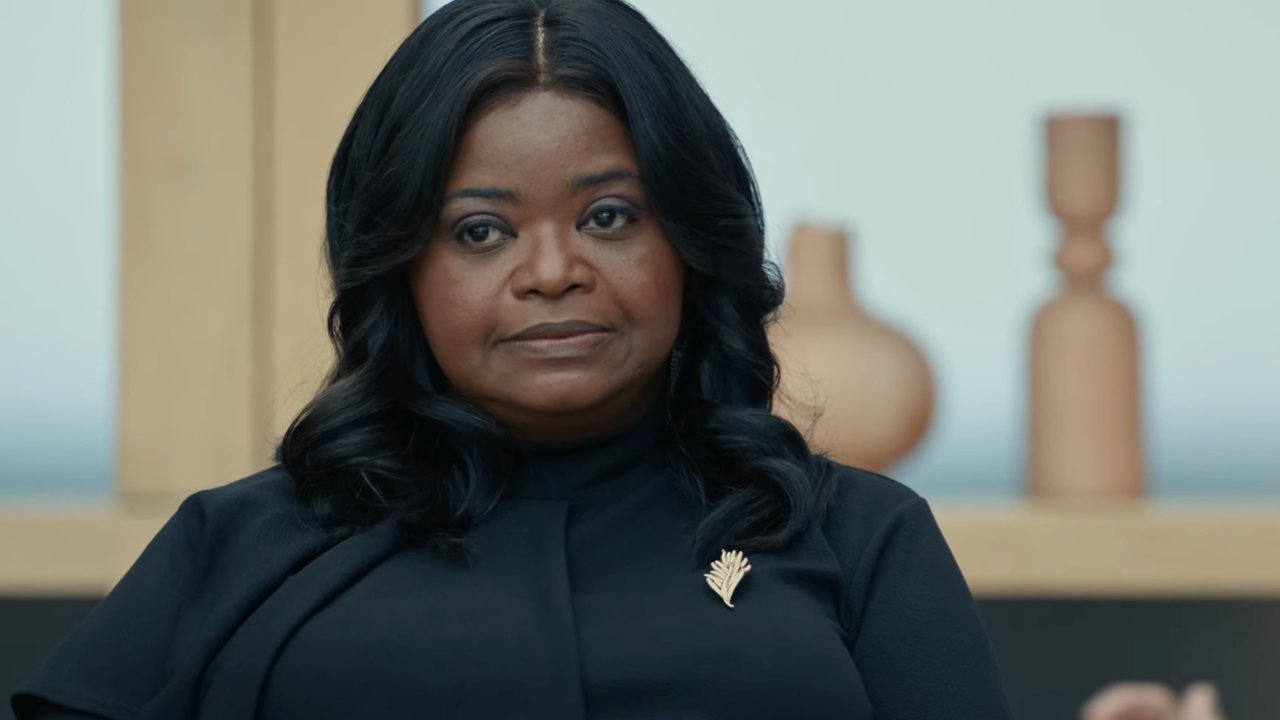Apple's iPhone 15 & Apple Watch event -- what we loved, and didn't
The iPhone 15 and Apple Watch Series 9 Apple released on Tuesday are expectedly evolutionary and not revolutionary, but what's inside them makes us wonder where we go from here.

Sorry, Tim, didn't mean to startle you
Just like the rumors predicted, this was a pretty iterative year for Apple's September event. As expected, we got new iPhone models but nothing dramatic, and similar for the Apple Watch.
That's fine. We cannot and should not expect Apple to blow our minds every time it rolls out new products, and the company is purportedly keeping its powder dry for next year, when Apple is rumored to be rolling out a more significant overhaul to the iPhone line.
Having said that, there was still quite a lot to talk about.
Apple's best gaming machine: the iPhone 15 Pro
While we didn't get the Ultra model that some rumor sites thought we would, we did get an iPhone 15 Pro with an A17 Pro chip. Among the other capabilities of the chip is a big boost to its Neural Engine core, which handles Machine Learning (ML) capabilities that help with things like image and video editing, voice recognition and other operations.
The A17 Pro also sports 20% faster GPU performance than its predecessor, and Apple says that'll translate into a much better gaming experience for the iPhone 15 Pro. Including, for the first time, hardware-based ray tracing capabilities.
Apple heralded this as the technology driving the forthcoming release of console-quality games for the iPhone 15 Pro, including Resident Evil games and a new Assassin's Creed title that's due out sometime next year, hopefully before the next iPhone comes out.
Why is any of this important? Because people play games on their iPhone - a lot. Back in 2021, its legal fight with Epic Games revealed that Apple actually makes more on games and game In-App Purchases (IAP) every year than Sony, Nintendo, Microsoft and Activision combined.
So it's understandable why it wants its flagship iPhone to be the best possible gaming device it can be, even outpacing the Mac.
Real-time hardware-based ray tracing is a very big deal for games and for Apple platforms more generally. It was, up until fairly recently, the domain of big, expensive, power-hungry graphics cards for PCs, from companies like Nvidia and AMD.
Apple and other mobile chip makers like Samsung and Qualcomm have scaled hardware ray tracing to the chips that power smartphones. Apple must take it a step further though, because hardware-based ray tracing is still missing from the Mac, which really needs it.
Hopefully some of this A17 Pro goodness will trickle down to the M3 and M3 Max chips we expect to see in the 2024 crop of Macs.
Way better photos and videos for the Pros
All iPhone 15 models get 48 megapixel (MP) sensors this year, with the Pro capable of outputting 4K High Dynamic Range (HDR) video at 60 frames per second. The 15 Pro Max gets a "tetraprism" camera lens that drives it 5x optical zoom feature - that's the "periscope" lens that rumor sites presaged.
It's worth noting that periscope lenses in high-end smartphones are not novel only to the iPhone 15 Pro. Google's had them in the Pixel Pro 8 for a while now, for example. But also inside the 15 Pro Max is a new optical image stabilization system that promises to keep your zoomed images sharp.

iPhone 15 Pro
The new optics, combined with the Neural Engine stuff we've already discussed and other clever techniques, is driving new computational photography features that translate into way, way better image quality on the higher-end iPhones in low light, in motion, with richer levels of detail and better clarity.
One of the things we're happy to see here is the ability to process portrait images after the fact. You can take a photo in the moment, then when you have a bit, isolate the subject, even change the focal length to highlight a different subject in the image.
Apple talked about the efficiency of the codecs it's using, but 48MP and 24MP images and video stack up fast. So it's high time that Apple bumped up the amount of iCloud storage folks can buy, with 6 or 12 terabyte (TB) options.
Given that's the case, and that 48 MP sensors are available across the board not only for all iPhone 15s but even for last year's iPhone 14 Pro, it's scandalous that Apple still only provides users with 5GB of storage on the free iCloud tier.
Apple makes a ton of money every year selling services to its customers, and it can definitely be less parsimonious with the amount of cloud-based storage it doles out.
Bye Lightning
The iPhone's switch to a USB-C port was inevitable: Apple's already made the transition for most of its products (beginning with the MacBook almost a decade ago now), and last year's European Union mandate all but sealed the fate of Lightning going forward.
As expected, the iPhone 15 line now includes USB-C in place of Lightning. The non-pro iPhone 15 models get USB-C operating at USB2 speeds up to 480 Mbps, while the Pro editions can transfer up to 10 Gbps when used with an optional USB 3 cable.
That falls short of Thunderbolt speeds, but it's a marked improvement.
Lightning connectivity will remain part of the Apple ecosystem for many years to come. It's disappeared from the iPhone 15, but Apple continues to sell plenty of models without it, and still hasn't updated other peripherals that use it.
One rumor we were happy to see not come to pass: that Apple would maintain some sort of "Made For iPhone" (MFI) cabling certification process to assure compatibility. Apple is offering its own cabling, if you have more money than sense, or just like spending a lot more than you need to.
One last, purely aesthetic point on the iPhone 15 -- Apple's colors for this year's models are mediocre. We're not big fans of pastels here, so the color choices for the 15 and 15 Plus feel flat, and the 15 Pro's color palette seems extra dark.
While the mechanism of PVD color deposition on titanium is far, far beyond the scope of this article, we acknowledge that Apple is somewhat limited by how it can actually color Titanium, when it comes to the Pro. Give us a bit of saturation for the 15 and the 15 Plus glass back, at the very least!
Picking nits over the Apple Watch
There was a lot of talk about nits for the new Apple Watches, and that's because it's the one thing that really physically differentiates the new Series 9 and Ultra 2 from their predecessors. We're not talking about larval lice here: a nit is a unit of measurement for light intensity which equals one candela per square meter.
And the Apple Watch Series 9 and Ultra 2 both sport dramatically better brightness levels than their forebears: 2,000 nits for the Series 9, double the 8, and 3,000 for the Ultra 2, compared to 2,000 for the first Ultra. What's more, both of them are capable of going down to 1 nit of brightness.
That's better for when you're checking your watch in the theater, for example, or on your bedstand during pre-dawn hours. It also translates into better battery efficiency.
As anticipated, the Series 9's most standout features are under the hood, inside the S9 chip that powers the device. After relatively modest performance gains in recent years, the S9 is a big leap forward, and Apple's used the new chip's ability to cram more features into the watch.
The most notable of these is a new double-tap gesture which enables the Apple Watch wearer to activate the primary button function of Apple Watch apps, so you can use it to start and stop music, hit your alarm clock snooze button and more.
It's interesting to see Apple break this out as a spotlight feature of the new Series 9, as it seems to be a somewhat iterative improvement over accessibility gestures that the company already introduced in previous Apple Watch models.

The new Apple Watch brings a performance boost and greater Find My accuracy
Those Neural Engine enhancements we mentioned extend to the S9 System in Package (SiP) that graces the new Apple Watch Series 9 and Ultra 2, enabling a lot more on-board processing than before. That has a practical security and performance benefits.
Your Siri queries, for example, don't need to get uploaded to Apple servers, processed, and then sent back -- it all happens right on the device.
Another under-the-hood improvement on the new watches is Ultra-wideband (UWB) 2 support, which provides more precise location finding, a feature also found on the new iPhones. If you've ever used your Apple Watch to find an errant iPhone or other "Find My"-compatible device that's gone missing, you know how handy this can be.
Rumors that Apple would force users of new Apple Watch models into a new band design turned out to be for nought. The purported magnetic band attachment system for new Apple Watches may be in store for future designs, but the bands that fit these new watches are downward-compatible with previous models.
Apple did introduce several new band designs and styles, specifically emphasizing their recycled content and carbon-neutrality. More on the "greening" of the Apple watch in a moment.
Green Apple
Apple's message about its commitment to sustainability came through loud and clear repeatedly during the event: the company's sourcing recycled materials for the new devices, and claims that the Apple Watch Series 9 is its first entirely carbon-neutral device. Well, some of them, anyway.
Any aluminum Apple Watch Series 9 or SE when paired with the new Sport Loop is carbon neutral, according to the company.
The message was repeatedly emphasized, culminating with an interstitial skit between product announcements featuring Oscar-winning actress Octavia Spencer - star of Apple TV+'s own series "Truth Be Told" - cast as a taciturn and dubious Mother Nature, grilling Tim Cook and others on Apple's environmental plans.

Octavia Spencer as "Mother Nature"
That skit seemed a bit heavy-handed to us, something that could have been compressed into a lot less time with a much less elaborate gag. But perhaps the piece's subtext was to remind everyone that Apple is a serious Hollywood player these days, just as much as a tech company.
We get it, Apple, you're doing your best to reduce the environmental impact of you and your suppliers. There's need to beat us over the head with it. It would have been more impactful the week after the event, in between the iPhone pre-order and shipment, for example.
Regardless, it certainly got folks talking.
We weren't expecting fireworks from the Wonderlust event, and we didn't get any. As has been the case for 10 years, the iteration is not year-over-year, but on a two- or three- year scale which more closely matches the average replacement cycle.
More than anything, the big leaps forward Apple is making in the chips that power these device has us very excited about what's to come.
Read on AppleInsider

Comments
This is certainly something to use for marketing. More people will consider this positively when making choices about purchasing electronics gear than will get cranky about Apple being "woke."
I think it's also something they should emphasize to cause other companies to follow in their footsteps. Apple is actually planning the entire life cycle of their products, reducing unneeded waste in production and distribution, creating a market for recycled materials from their own products, and planning not just how to put their products together, but how to efficiently take them back apart in order to recover those materials for re-use. This is the opposite of what most other corporations have been doing for decades.
Even as environmental regulations have forced companies to stop dumping many manufacturing and production chemicals directly into the environment, corporations have continually found other ways to externalize their costs by handing their waste over to consumers, leaving it to them to dump into the environment. Overuse of plastics, single-use items, unnecessary packaging and more are all examples of corporations reducing their own costs, while shifting them to consumers to deal with the waste. They stamp some of it with a recycle symbol and then let consumers and taxpayers assume the cost of collecting, processing and attempting to re-sell recycled materials.
For example, once upon a time, Coke, Pepsi and others bottled their drinks in glass, and consumers could return those to the store for credit, the bottlers took them back, washed them and reused them again. Then they switched to plastic, initially without even pretending to care about recycling or reuse. Recycling came later, but it's up to municipalities to pay for collection and recycling (or consumers outside city limits to pay for this directly), and Coke and Pepsi are extremely limited in how much recycled plastic they buy and turn back into bottles. So in essence they dump huge quantities of plastic on consumers and leave it to us to figure out what to do with it all. It's obscene, when you spend two minutes thinking about it.
Just like to point out that in our household we have both and iPhone and a Pixel Phone. The latest iteration of the latter phone is the Pixel 7. The Pixel 8 which you mentioned in your article has not been officially released.
While I applaud your informative and well-written article on the iPhone it is always good to fact-check details about competing or comparable products.
There is also an iPhone 15 Pro series CPU processor change mid year which might be a negative for the early adopters.
I will see on 18 September how this new 6TB iCloud plan fits in with the Apple plus subscription.
2. It’s on by default. You don’t have to go and deliberately turn it on, it’s just there.
3. I believe the new version allows for more options than the previous Accessibility version.
HTH!
2. You’re not the target market for an iPhone 15, and you have made the correct decision IMO. The target market for *any* new model of iPhone at this point is not the previous-model buyers, but the “haven’t upgraded in 3 or 4 years” audience. That would be me.
As I have a Lightning port on my current 12 Pro Max that no longer responds to cleaning, plus a broken glass back (thanks to the accursèd silicone case’s hard camera bumper that was supposed to protect the thing - well, I suppose it protected the camera covers…), I’m no longer in a position to be able to wait. Although I do have an eye on my carrier’s ‘upgrade insurance’ charge in case the 16 is in fact A LOT better. The MagSafe charger is also showing signs of being cantankerous after the breaking of the glass back - and the 15 NO LONGER HAS A GLASS BACK! HOORAY! So, I suppose that I am one of the ‘target audience’.
Exactly. The percentage of users who upgrade their devices every year is minuscule. and that percentage gets lower each year as Apple's user base grows. Prime target for this year's phones, I believe, is anything older than a well-functioning 12/12 Pro.
But that is unsubstantiated and a typical sort of connect-the-dots rumor that often turns out to be wrong, because Apple's special, disruptive, and wildly-successful relationship with TSMC is still not very well understood, even though we are ten years into it at this point (it started with TSMC 20nm, with iPhone 6). Yes, it is confirmed that TSMC's mainstream 3nm production will shift to N3E, and the second-generation refinement N3P will be built on N3E, not N3 (the name of which has been changed to N3B to differentiate it from N3E). But that does not mean Apple will necessarily be included in that detour. It's entirely possible A17 Pro, M3, and M3 Pro/Max will all be N3, and not N3E. Not to mention the uncertain possibility of a non-Pro A17 next year (basically A17 without the "Pro" GPU, mirroring the now-established approach to M-series silicon).
For this perspective, see Daniel Nenni's comments on the June rumor: TSMC’s 3nm Output Could Reach Up To 100,000 Wafers Monthly By The End of 2023 (SemiWiki main forum post)
What gets lost behind the veil of secrecy is the reason why TSMC is sending everyone but Apple over to N3E. N3 is specific to Apple. As a result, it's not flexible enough for a wider array of customers. There's a deep dive into what is known here, but keep in mind that TSMC's published papers just sort of chart differences, they don't give away trade secrets: TSMC N3, And Challenges Ahead (WikiChip Fuse)
There's a very good chance Apple is happy with N3, and they won't be going over to N3E. The mysterious N3S could also be Apple-specific. Regardless, it will all merge back together with N2 and M4.